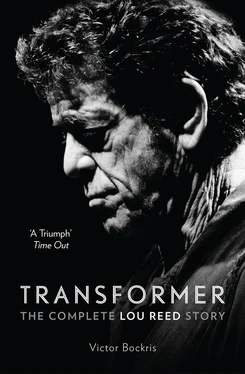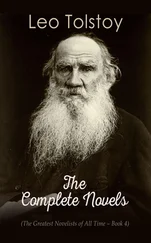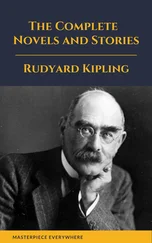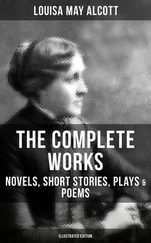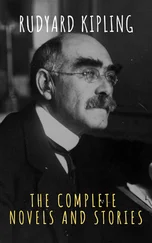His parents, she realized, “had no sense of what was really in his mind, and they were very upset and frightened by what awful things he was thinking. He must have been really miserable, how scary.” As a result, in order to obviate any disturbance, Lou’s tense and nervous family attended to his every need just as if he were the perennial prodigal son. The only person in the house who received any regular affection from Lou was his little sister, Elizabeth, who had always doted on Lou and thought he was the best.
However, at least for the time being, Lou’s introduction of Shelley into their lives caused his parents unexpected joy. Ecstatic that his son had brought home a clean, white, beautiful Jewish girl, Mr. Reed increased Lou’s allowance.
If he had had any idea of the life Lou and Shelley were leading at Syracuse, he would probably have acted in the reverse. As the year wore on, sex, drugs, rock and roll, and their influences began to play a bigger role in both their lives, although Shelley did not take drugs. Already a regular pot smoker, Lou dropped acid for the first time and started experimenting with peyote. Taking drugs was not the norm on college campuses in 1961. Though pot was showing up more regularly in fraternities, and a few adventurous students were taking LSD, most students were clean-cut products of the 1950s, preparing for jobs as accountants, lawyers, doctors, and teachers. To them, Lou’s habits and demeanor were extreme. And now, not only was Lou taking drugs, he began selling them to the fraternity boys. Lou kept a stash of pot in a grocery bag in the dorm room of a female friend. Whenever he had a customer, he’d send Shelley to go get it.
Lou was by now on his way to becoming an omnivorous drug user and, apart from taking acid and peyote, would at times buy a codeine-laced cough syrup called turpenhydrate. Lou was stoned a lot of the time. “He liked me to be there when he was high,” Shelley remembered. “He used to say, ‘If I don’t feel good, you’ll take care of me.’ Mostly he took drugs to numb himself or get relief, to take a break from his brain.”
Meanwhile, having presented himself as a born-again heterosexual, Lou now wasted no time in making another shocking move by shoring up his homosexual credentials. In the second semester of his sophomore year, he had what he later described as his first, albeit unconsummated, gay love affair. “It was just the most amazing experience,” Lou explained. “I felt very bad about it because I had a girlfriend and I was always going out on the side, and subterfuge is not my hard-on.” He particularly remembered the pain of “trying to make yourself feel something towards women when you can’t. I couldn’t figure out what was wrong. I wanted to fix it up and make it okay. I figured if I sat around and thought about it, I could straighten it out.”
Lou and Shelley’s relationship rapidly escalated to a high level of game playing. Lou had more than one gay affair at Syracuse and would often try to shock her by casually mentioning that he was attracted to some guy. Shelley, however, could always turn the tables on him because she wasn’t threatened by Lou’s gay affairs and often turned them into competitions that she usually won for the subject’s attentions. If Shelley was a match for Lou, Lou was always ready to up the stakes. They soon got out of their depth playing these and other equally dangerous mind games, which led them into more complexities than they could handle.
Friends had conflicting memories of Lou’s gay life at Syracuse. Allen Hyman viewed him as being extraordinarily heterosexual right through college, whereas Sterling Morrison, who thought Lou was mostly a voyeur, commented, “He tried the gay scene at Syracuse, which was really repellent. He had a little fling with some really flabby, effete fairy. I said, ‘Oh, man, Lou, if you want to do it, I hate to say it but let’s find somebody attractive at least.’”
Homosexuality was generally presented as an unspeakable vice in the early 1960s. Nothing could have been considered more distasteful in 1962 America than the image of two men kissing. The average American would not allow a homosexual in his house for fear he might leave some kind of terrible disease on the toilet seat, or for that matter, the armchair. There were instances reported at universities in America during this time when healthy young men fainted, like Victorian ladies, at the physical approach of a homosexual. In fact, as Andy Warhol would soon prove, at the beginning of the 1960s the homosexual was considered the single most threatening, subversive character in the culture. According to Frank O’Hara’s biographer, Brad Gooch, “A campaign to control gay bars in New York had already begun in January 1964 when the Fawn in Greenwich Village was closed by the police. Reacting to this closing by police department undercover agents, known as ‘actors,’ the New York Times ran a front-page story headlined, ‘Growth of Overt Homosexuality in City Provokes Wide Concern.’” Besides the refuge large cities such as San Francisco and New York provided for homosexuals, many cultural institutions, especially the private universities, became home to a large segment of the homosexual community. Syracuse University, where there was a hotbed of homosexual activity, led by Lou’s favorite drama teacher, was no exception.
“As an actor, I couldn’t cut the mustard, as they say,” Reed recalled. “But I was good as a director.” For one project, Lou chose to direct The Car Cemetery (or the Automobile Graveyard ) by Fernando Arrabal. Reed could scarcely have found a more appropriate form (the theater of the absurd) or subject (it was loosely based on the Christ mythology) as a reflection of his life. The story line followed an inspired musician to his ultimate betrayal to the secret police by his accompanist. Everything Lou wrote or did was about himself, and had the props been available, perhaps Reed would have considered a climactic electroshock torture scene. In giving the musician a messianic role against a backdrop of cruel sex and prostitution, the play appealed to the would-be writer-musician. “I’m sure Lou had a homosexual experience with his drama teacher,” attested another friend. “This drama teacher used to have guys go up to his room and put on girls’ underwear and take pictures of them and then he’d give you an A. One dean of men himself either committed suicide or left because he was associated with this group of faculty fags who were later indicted for doing all kinds of strange stuff with the students.”
The “first” gay flirtation cannot simply be overlooked and put aside as Morrison and Albin would want it to be. First of all, it had happened before. Back in Freeport during Lou’s childhood, he had indulged in circle jerks, and the gay experience left him with traits that he would develop to his advantage commercially in the near future. Foremost among them was an effeminate walk, with small, carefully taken steps that could identify him from a block away.
Despite an apparent desire originally to concentrate on a career as a writer, just as his guitar was never far from his hand, music was never far from Reed’s thoughts. Lou’s first band at Syracuse was a loosely formed folk group comprising Reed; John Gaines, a striking, tall black guy with a powerful baritone; Joe Annus, a remarkably handsome, big white guy with an equally good voice; and a great banjo player with a big Afro hairdo who looked like Art Garfunkel.
The group often played on a square of grass in the center of campus at the corner of Marshall Street and South Crouse. They also occasionally got jobs at a small bar called the Clam Shack. Lou didn’t like to sing in public because he felt uncomfortable with his voice, but he would sing his own folk songs privately to Shelley. He also played some traditional Scottish ballads based on poems by Robert Burns or Sir Walter Scott. Shelley, who would inspire Lou to write a number of great songs, was deeply moved by the beauty of his music. For her, his chord progressions were just as hypnotic and seductive as his voice. She was often moved to tears by their sensitivity.
Читать дальше
